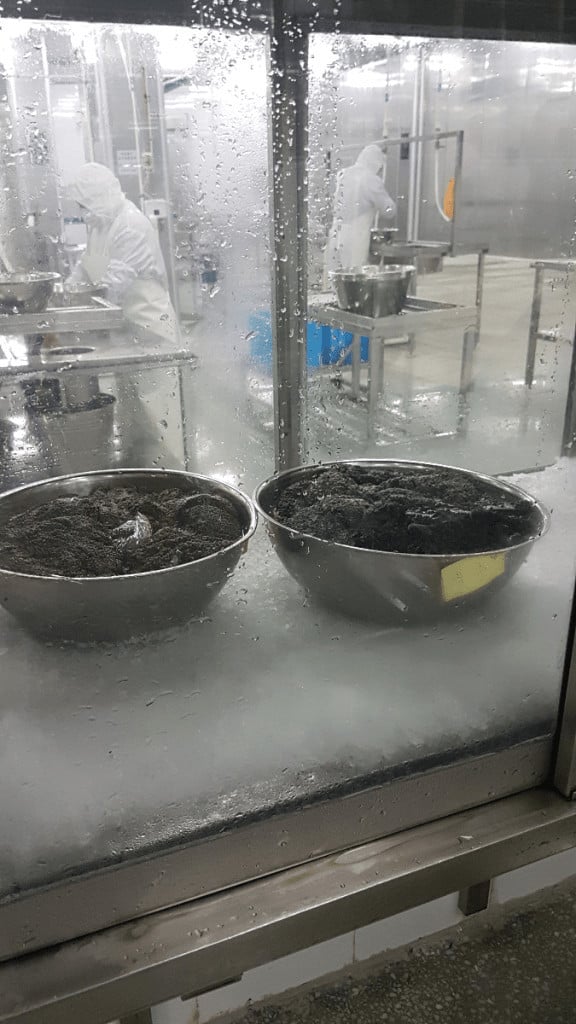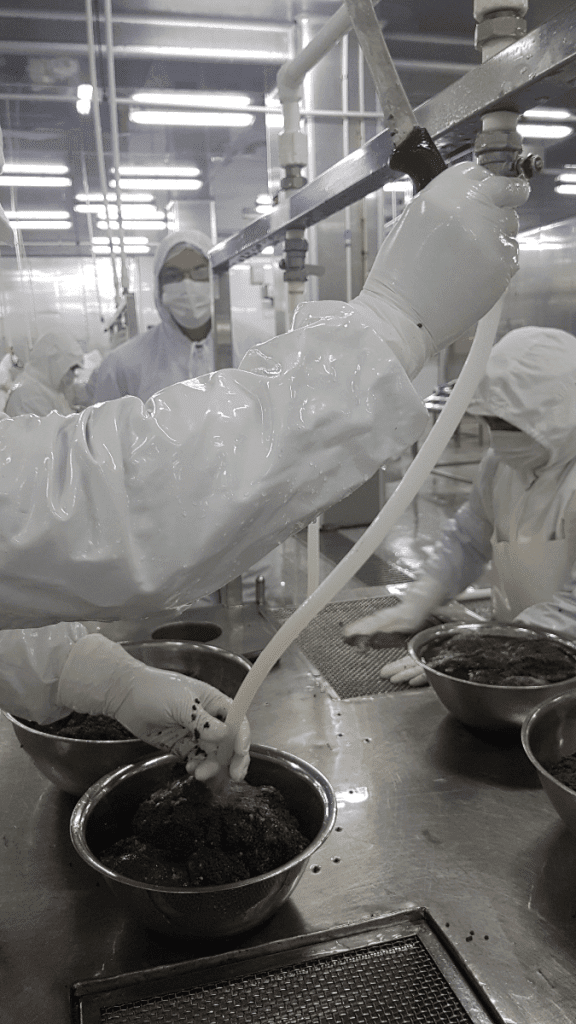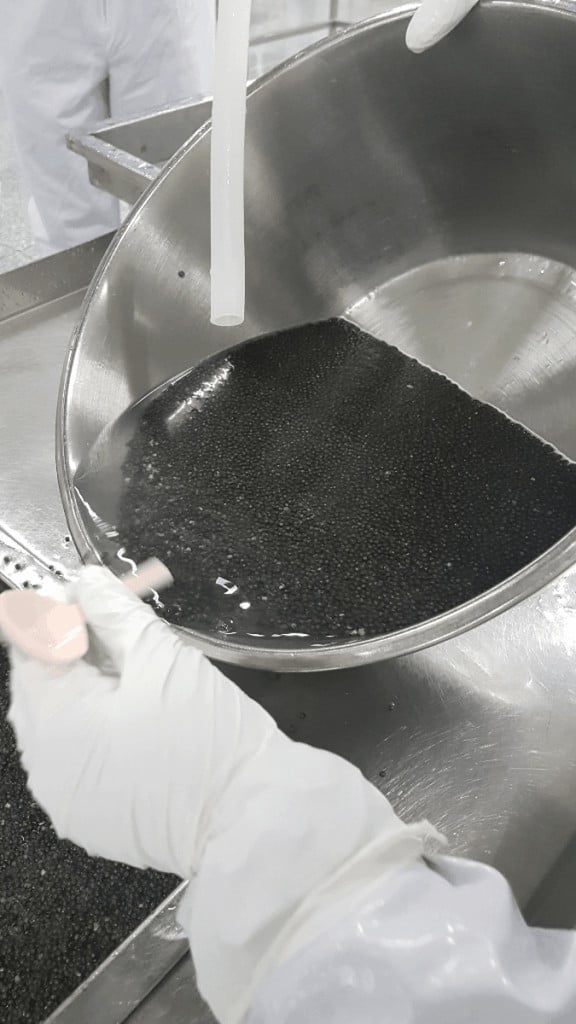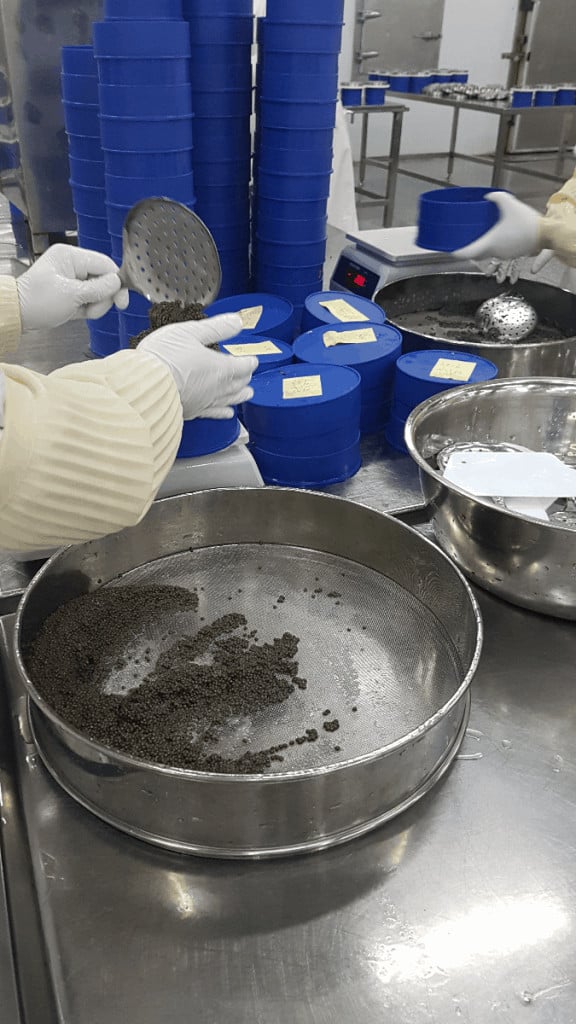Things to Know about Caviar
Caviar is a delicacy and elevates a regular dish to an exclusive and luxurious one. The black or golden coloured pearls pop in the mouth and add a distinguished flavour.
We were lucky enough to receive an invitation to visit the biggest producer of caviar. Read on to learn about our experience and visit to the Kaluga Queen farm followed by a tasting.
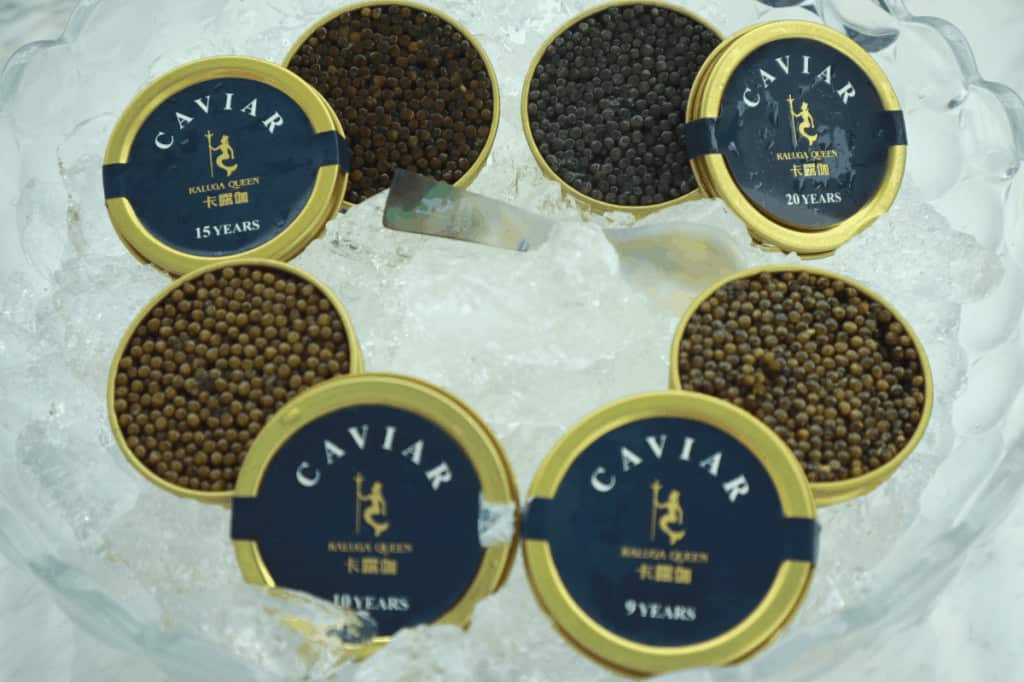
Sturgeon and caviar
At Kaluga Queen they produce five varieties which are Siberian sturgeon, Russian sturgeon, Kaluga, Hybrid sturgeon, and Amur sturgeon.
- Siberian sturgeon produce these delicate eggs the quickest after “only” 7 to 8 years. Its colour can be brown, grey or black, and the flavour is pure with a light aftertaste.
- Hybrid sturgeon is a cross breed from Kaluga and Amur and unique to Kaluga Queen. The caviar matures in the 8th to 10th year. The colour ranges from dark grey to light yellow and even golden while the toe is firm and pops with a longlasting aftertaste.
- The caviar of Russian sturgeon is the well-known Oscietra and matures in the 10th to 11th year. The colour has many shades of brown and the firm grain is juicy with a nutty taste.
- Kaluga sturgeon take 15 to 20 years to mature and produce caviar. This is one of the biggest sturgeons and can reach over 1000 kg. The roe varies from medium to dark brown and the full-bodied flavour has a special aftertaste.
- Beluga might be the best known by name but it also takes the longest to mature. It takes more than 20 years before the caviar of dark grey to pearly grey is produced. The pearls are the biggest with over 3.5mm and have a buttery, complex flavour.
Natural farming
The sturgeon is a calm and curious but impressive fish. At Kaluga Queen they grow the fish in the best possible conditions and the famous Qiandao lake in China with a water area of 573 square kilometres is just perfect. The natural streaming and the abundant water exchange and rich oxygen dissolution in the water provides the fish with a comfortable, stress free home, and a nearly wild environment. We only saw a fraction of the farm but it was a breath-taking experience within a beautiful, heavenly location.
Caviar processing
Because it is a delicate product, processing needs to be quick and precise. To experience it, we had to go through the highest sanitation standards, including a sanitation blowing room.
The entire process is done manually in a room to a maximum 10°C and it takes no more than 15 minutes.
Retrieving ovary, roe selection, roe washing, dripping, salting is only a few of the 16 steps executed by the professional caviar masters. Salt is the only ingredient added, so it won’t be surprising that it is key to the perfect end product.
Nutrition
- Cholesterol is ⅔ lower than that of eggs.
- Fatty acids are high and EPA, DHA, DPA account for over 17% of caviar.
- Sturgeon caviar contains 18 types of amino acids and account for 52% of the caviar.
Cost of caviar
A few factors will determine the cost and it is not always extremely expensive to get hold of caviar.
The species
Some fish are easy to find in the wild and others more difficult. Nowadays, because most of the caviar is farmed, it is easier to keep many species.
Time to produce
This is the most important factor as different types of the sturgeon will produce caviar at different times. Hybrids produce after only 7 to 8 years, whereas the Beluga takes 20 years of caring and waiting before the caviar is ready. The longer it takes to produce, the higher the cost.
Demand
Although it takes a long time before caviar is produced, the demand is a very important factor to the price of this delicate product. In the western world, luxury food products are associated with celebrations, and Christmas and New Year parties are popular occasions to serve caviar.
Quality
In general, the farmers of caviar know what to expect of the product because the fish species are kept and nourished in the best possible, natural conditions, but sometimes a fish will produce a very rare and exceptional colour or size of roe which makes it more special. There are always customers who are keen to get their hands on these exceptional harvests.
Interesting and fun facts about caviar
- Only sturgeon produce caviar. There are 27 species of sturgeon that produce it, with Beluga and Sevruga being the highest quality. If the eggs are products of salmon, trout or any other fish, it is sold on the market as roe.
- It is now illegal to capture sturgeon in the wild for its eggs because all sturgeon species, like Beluga, are on the endangered list. All premium caviar nowadays is farmed to protect the endangered species.
- Caviar can be extracted without killing the fish. The most amazing process is the Kohler process where special massage techniques are applied to get the eggs. Although this technique is revolutionary, it is said that the caviar is of lesser quality because it gets too soft after the massage.
- It was a delicacy known by Russian Tsars, as well as ancient Greeks and Romans, long before Champagne, oysters and truffles.
- Caviar was often a snack in places like Russia and other Caspian Sea countries during the 20th century. They smeared it on dark bread just like we consume butter.
- Caviar has long been seen as an antidepressant because of the high omega-3 content. Not sure if it should be compared as an ancient Prozac but it is said that it made people happy ????
- Caviar is also seen as a very healthy protein. It has more nutrients and minerals than any other protein.
- It is a long-standing tradition to serve blinis with cream and caviar. Today caviar is available for any dish that needs an upgrade, from fish burgers to pasta.

